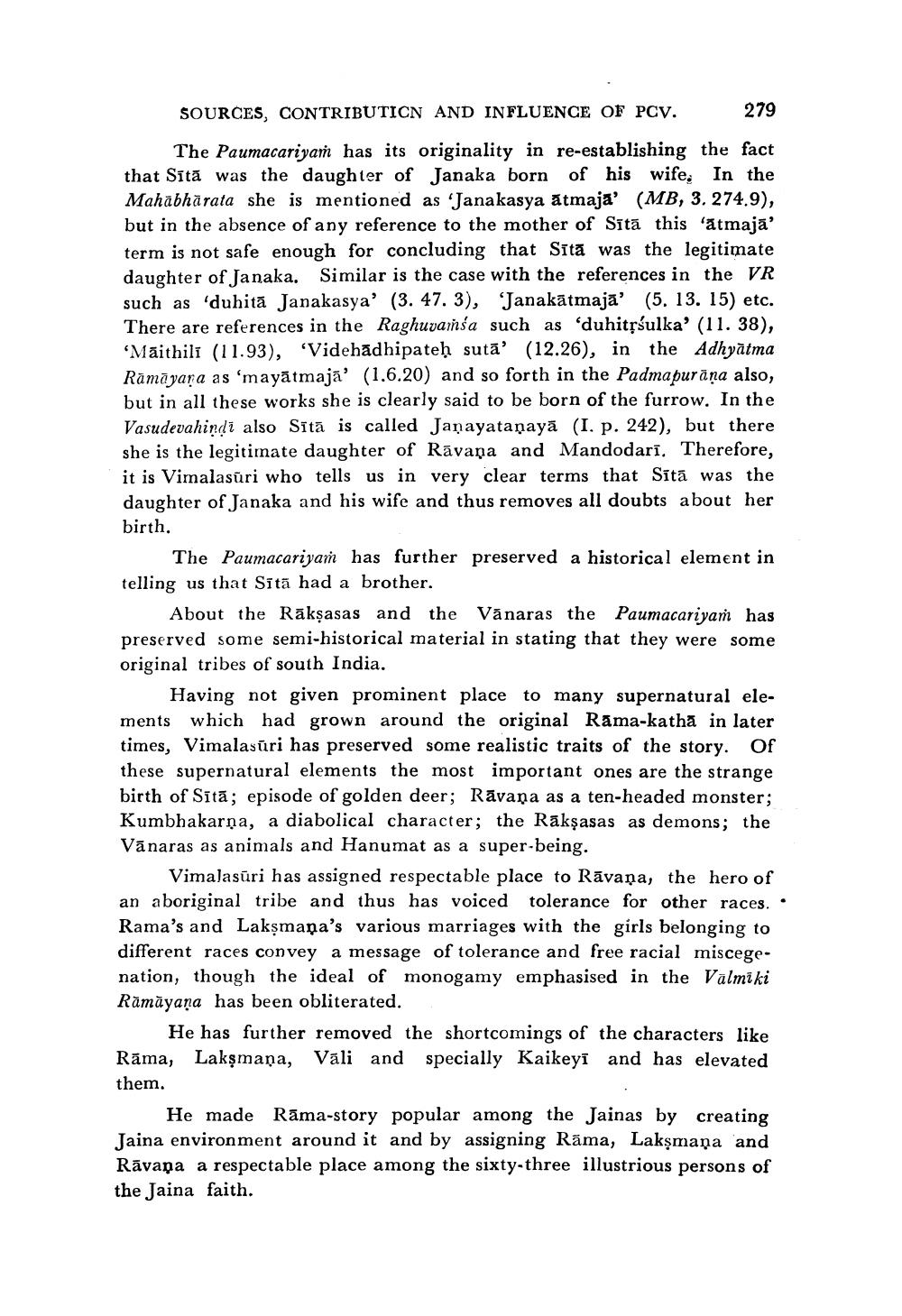________________
SOURCES, CONTRIBUTICN AND INFLUENCE OF PCV.
279
The Paumacariyam has its originality in re-establishing the fact that Sītā was the daughter of Janaka born of his wife. In the Mahabharata she is mentioned as 'Janakasya atmaja' (MB, 3. 274.9), but in the absence of any reference to the mother of Sītā this ‘ātmajā' term is not safe enough for concluding that Sita was the legitimate daughter of Janaka. Similar is the case with the references in the VR such as duhita Janakasya' (3. 47. 3), Janakātmajā' (5. 13. 15) etc. There are references in the Raghuvaṁsa such as 'duhitřśulka' (11. 38), 'Maithili (11.93), "Videhādhipateḥ sută' (12.26), in the Adhyātma Rāmāyara as 'mayātmajā' (1.6.20) and so forth in the Padmapuräna also, but in all these works she is clearly said to be born of the furrow. In the Vasudevahindi also Sītā is called Jaņayataņayā (I. p. 242), but there she is the legitimate daughter of Rāvana and Mandodarī. Therefore, it is Vimalasūri who tells us in very clear terms that Sītā was the daughter of Janaka and his wife and thus removes all doubts about her birth.
The Paumacariyam has further preserved a historical element in telling us that Sītā had a brother.
About the Rākşasas and the Vānaras the Paumacariyan has preserved some semi-historical material in stating that they were some original tribes of south India.
Having not given prominent place to many supernatural elements which had grown around the original Rama-katha in later times, Vimalasūri has preserved some realistic traits of the story. Of these supernatural elements the most important ones are the strange birth of Sītā; episode of golden deer; Rāvana as a ten-headed monster; Kumbhakarna, a diabolical character; the Rākşasas as demons; the Vānaras as animals and Hanumat as a super-being.
Vimalasūri has assigned respectable place to Rāvana, the hero of an aboriginal tribe and thus has voiced tolerance for other races.. Rama's and Laksmana's various marriages with the girls belonging to different races convey a message of tolerance and free racial miscegenation, though the ideal of monogamy emphasised in the Valmiki Rāmāyana has been obliterated.
He has further removed the shortcomings of the characters like Rāma, Lakşmaņa, Vali and specially Kaikeyi and has elevated them.
He made Rāma-story popular among the Jainas by creating Jaina environment around it and by assigning Rāma, Lakşmaņa and Rāvana a respectable place among the sixty-three illustrious persons of the Jaina faith.




